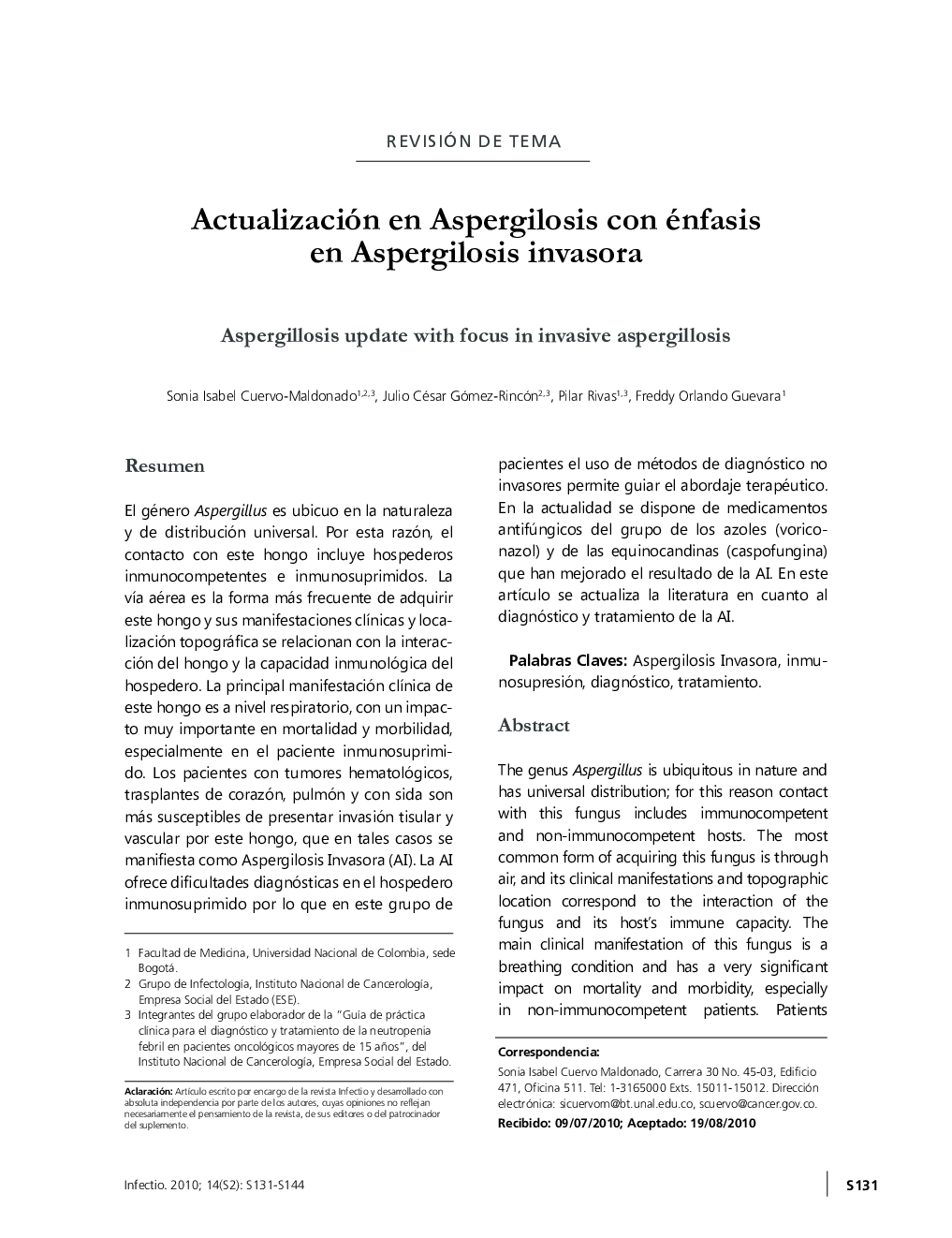| Article ID | Journal | Published Year | Pages | File Type |
|---|---|---|---|---|
| 3403924 | Infectio | 2010 | 14 Pages |
ResumenEl género Aspergillus es ubicuo en la naturaleza y de distribución universal. Por esta razón, el contacto con este hongo incluye hospederos inmunocompetentes e inmunosuprimidos. La vía aérea es la forma más frecuente de adquirir este hongo y sus manifestaciones clínicas y localización topográfica se relacionan con la interacción del hongo y la capacidad inmunológica del hospedero. La principal manifestación clínica de este hongo es a nivel respiratorio, con un impacto muy importante en mortalidad y morbilidad, especialmente en el paciente inmunosuprimido. Los pacientes con tumores hematológicos, trasplantes de corazón, pulmón y con sida son más susceptibles de presentar invasión tisular y vascular por este hongo, que en tales casos se manifiesta como Aspergilosis Invasora (AI). La AI ofrece dificultades diagnósticas en el hospedero inmunosuprimido por lo que en este grupo de pacientes el uso de métodos de diagnóstico no invasores permite guiar el abordaje terapéutico. En la actualidad se dispone de medicamentos antifúngicos del grupo de los azoles (voriconazol) y de las equinocandinas (caspofungina) que han mejorado el resultado de la AI. En este artículo se actualiza la literatura en cuanto al diagnóstico y tratamiento de la AI.
The genus Aspergillus is ubiquitous in nature and has universal distribution; for this reason contact with this fungus includes immunocompetent and non-immunocompetent hosts. The most common form of acquiring this fungus is through air, and its clinical manifestations and topographic location correspond to the interaction of the fungus and its host's immune capacity. The main clinical manifestation of this fungus is a breathing condition and has a very significant impact on mortality and morbidity, especially in non-immunocompetent patients. Patients with haematological malignancies, heart or lung transplant surgeries, and AIDS are the most susceptible to present tissue and vascular invasion by this fungus in the form of invasive aspergillosis (IA). The IA presents diagnostic difficulties in non-immunocompetent hosts; therefore using non-invasive diagnosis methods for this group of patients offers therapeutic approach guidance. Antifungal drugs such as azoles (voriconazole) and echinocandins (caspofungin), that have improved the AI group results, are available nowadays. This article updates the literature on AI diagnosis and treatment.
